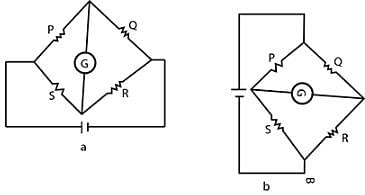Test: Electric Current & Measuring Instruments(11 Nov) - JEE MCQ
10 Questions MCQ Test Daily Test for JEE Preparation - Test: Electric Current & Measuring Instruments(11 Nov)
When the position of cell and galvanometer in a Wheatstone bridge is inter-changed, its balanced condition
Ten million electrons pass from point P to point Q in one micro second. The current and its direction is
| 1 Crore+ students have signed up on EduRev. Have you? Download the App |
A current in a wire is given by the equation, I =2t2 − 3t + 1, the charge through cross section of wire in time interval t = 3s to t = 5s is
An electric bulb is rated 220 V and 100 W. Power consumed by it operated on 110 V is
Meter Bridge or Slide Wire Bridge is a practical form of
In a potentiometer a cell of e.m.f 2V gives a balance point at 30cm. If the cell is replaced by another cell and the balance point shifts to 60cm.What is the e.m.f of the other cell?
1 ampere current is equivalent to
In an atom electrons revolves around the nucleus along a path of radius 0.72Å making 9.4×1018 revolution per second. The equivalent current is (e = 1.6×10−19C)
Sensitivity of potentiometer can be increased by
The current in a wire varies with time according to the equation I = 4 + 2t, where I is in ampere and t is in second. The quantity of charge which has to be passed through a cross-section of the wire during the time t = 2s to t = 6s is?
|
360 tests
|























